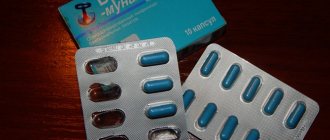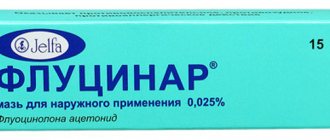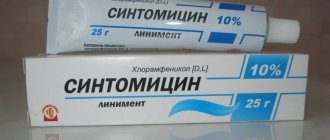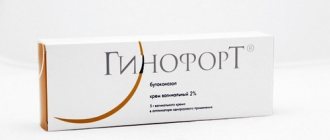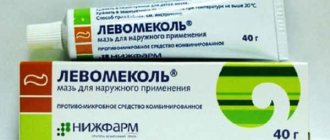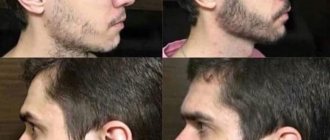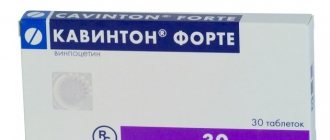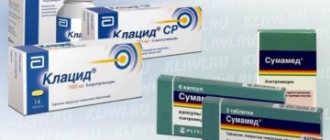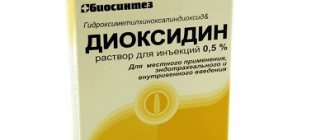Zinc ointment has proven itself as a drug in the treatment of many skin problems due to its effectiveness and affordable price.
The instructions for use of zinc ointment discuss in detail the storage and use conditions of the drug, indications and contraindications. But zinc liniment is a pharmaceutical drug, so before starting treatment with this medicine, you must visit a dermatologist for an accurate diagnosis of the disease and consultation on treatment with zinc ointment.
The realization that an effective drug does not have to be imported, expensive and advertised will serve you well and will allow you to cure unpleasant nuances on the skin quickly, inexpensively and efficiently.
Causes of cosmetic problems in pregnant women
Skin rashes are an indicator of the presence of any malfunctions in the body. Before starting treatment, it is necessary to find out the true root cause of acne in order to choose the method of treatment. Rash, herpes and inflammatory lesions on the epidermis in expectant mothers occur due to the following factors:
- Changes in hormonal levels. The skin may become either too dry or too oily. The secretion produced abundantly by the sebaceous glands provokes the appearance of inflammatory foci.
- Transformations in metabolism. Most of the nutrients are spent on the development of the child, and the skin does not receive enough vitamins and minerals.
- Allergy. Habitual food causes a rash due to decreased immunity. The body reacts especially sharply to citrus fruits, red berries, early vegetables and fruits, which may contain nitrates.
- Stress. Nervous overexcitation is often reflected on the skin.
- The influence of cosmetics. During pregnancy, it is advisable to use natural products, because the abundance of preservatives and fragrances in creams provokes skin irritations. Low-quality foundations and powders also clog pores.
- Reaction to household chemicals. Neglecting rubber gloves while washing or washing dishes allows the skin to come into direct contact with aggressive detergents, which can lead to dermatological problems.
- Changing food preferences. Expectant mothers often want too spicy, salty, fried foods or sweets in large quantities. Such gastronomic excesses are reflected on the skin.
Having determined the cause of the formation of pimples, first of all, it is important to exclude the “provocateurs” of the rashes, establish a daily routine, and adhere to proper nutrition. At the same time, treatment with external means is connected. One effective remedy is zinc ointment. Its use is permitted during pregnancy and lactation. The medication is also suitable for treating skin problems in young children.
Modern zinc-based preparations
Zinc-based acne products are available in the form of ointments, creams, and tablets. An excellent preparation is zinc paste, which dries the affected area of the skin and relieves inflammation. Zinc is used in the manufacture of children's creams, and also as a component in powder form for preparing an anti-acne solution. Many cosmetic companies include the substance in skin regeneration creams.
Zinc ointment
A time-tested and affordable anti-acne remedy for everyone is called zinc ointment, which contains substance oxide and petroleum jelly. With regular use, the functioning of the sebaceous glands improves, excess sebum no longer appears, and pores are not clogged. Pustular processes on the face go away faster, and people with oily skin types notice the disappearance of blackheads and unpleasant shine.
Salicylic-zinc ointment
The product with zinc and salicylic acid copes well with both pimples and their marks. Another name for the drug is Lassara paste; its bactericidal and anti-inflammatory properties, as well as the regulation of the sebaceous glands, are widely known. All components penetrate deep into the skin and improve blood circulation, and acne spots and scars disappear much faster.
Zenerite
A product with zinc oxide and an antibiotic in the form of a powder for preparing a solution “Zinerit” is known to almost every person who has encountered a rash on the face. The effect of treatment with the drug occurs quite quickly, which is why it is widely used in the treatment of acne. Erythromycin in combination with zinc quickly eliminates acne at any stage. The method of application and course of treatment depends on the development of the skin disease.
Polyosin
A well-known product with zinc is “Poliosin” ointment. The drug has antimicrobial and anti-inflammatory effects. In addition to zinc oxide, the composition includes salicylic acid and a special filtrate. It is successfully used for acne, for wound healing, burns and bedsores, as well as other skin diseases.
Cream with zinc
Among the well-known preparations with zinc for the face are the products of “Clean Line” with eucalyptus “Ideal Skin”. Another zinc-based acne cream is produced for problem skin “Zinc Cream”, as well as an effective cream “Seracin” with zinc and sulfur from Russia.
In which creams does zinc become more effective?
Combining zinc with other active substances has been successfully used to treat acne and other skin problems. The compound of zinc with salicylic acid has long been used in the production of many creams for problem skin and to restore its elasticity. In combination with an antibiotic, zinc is also prescribed to treat various pimples. There are practically no contraindications to the use of drugs with zinc, because the substance is even included in creams for small children. However, to prevent individual intolerance to the components of the ointment, you need to do an allergy test on a sensitive area of the skin.
Tips for using the product on the face
Before applying an ointment, cream or mask, the face must be cleansed of impurities using cosmetics. In order for the components of a homemade or ready-made mask to work better, the skin is steamed over a container of hot water for 10 minutes, covered with a towel. This procedure will help open the pores, and zinc and other components will penetrate into the deeper layers of the skin and act faster. Cleanse the face with caution if there are purulent processes or painful formations. In this case, it is better to consult a doctor.
Compound
Most medications are prohibited for expectant mothers, as they enter the bloodstream and can cause abnormalities in the development of the fetus. Zinc ointment can be used during pregnancy due to its safe composition. Basic ingredients of the product:
- zinc oxide;
- petrolatum;
- additional components.
The ointment acts only on the epidermis, does not penetrate into the deeper layers of the skin and, accordingly, is not absorbed into the blood. In addition, zinc oxide, the main substance of the drug, is not toxic when exposed externally. The ingredient is dangerous only when ingested in its pure form or inhaled in large quantities.
Zinc ointment during pregnancy: can it be used and what are the contraindications?
Modern pharmacology is constantly producing new products to combat skin irritations, acne, heat rashes and other dermatological problems.
These medicines are enriched with various ingredients that help fight illnesses, but there are also long-known, proven medicines, including zinc ointment, used even during pregnancy and breastfeeding.
Its use for children is not prohibited.
The product is produced in the form of a paste, which is applied externally to the affected areas of the dermis.
Zinc ointment is one of the safest medicines due to the components contained in it.
The product includes:
- Zinc oxide;
- Petrolatum;
- Excipients.
The main substance of the drug is not toxic when used in a paste. It is not able to penetrate the skin, so it does not enter or be absorbed into the blood.
When used orally or when inhaled in large quantities, zinc oxide vapor can have a negative effect on the body, but given that its effect ends on the skin, it does not cause harm.
That is why the paste is safe for expectant mothers and their babies.
During treatment, including during pregnancy, the medication has the following effects:
- Dries the skin;
- Relieves inflammation and irritation of the dermis;
- Has an antiseptic and disinfectant effect;
- Produces an adsorbing effect;
- Significantly weakens exudative processes accompanying diseases.
In addition, zinc paste promotes the formation of a kind of protective shell on the skin, which reduces the impact of the factors that provoke the disease and its possible complications on the skin.
The medication is used to treat dermatological diseases of various origins.
Thus, zinc paste is used to treat the following diseases:
- Heat rash, diaper rash;
- Diaper dermatitis;
- Herpes;
- Dermatitis, ulcers, streptoderma;
- Burns.
The product is also widely used in the fight against bedsores, eczema when it is in the acute phase, and various types of wounds. The paste has also proven itself as an excellent remedy against pimples, acne, acne, etc.
Before you start using the medicine, consult your doctor about the appropriateness of its use - a preliminary examination is required to prescribe it. A contraindication to its use may be individual intolerance to the components of the paste.
When using zinc ointment for acne and other dermatological problems, including during pregnancy, the following side effects may occur:
- Hyperemia;
- Skin rash;
- Itching.
To avoid harm to the body, you must adhere to the following precautions:
- Be careful not to get the paste into your eyes;
- Avoid getting the product into your nose;
- Prevent the ointment from getting into the mouth and through it into the stomach.
Zinc ointment can be used, but if it is not used correctly, other side effects may occur, regardless of whether you use it during pregnancy or not:
- Increased sweating;
- Cough;
- General malaise;
- Pain in joints and muscles;
- Chills;
- Headache.
During the period of bearing a baby, due to hormonal changes, a woman may develop acne, acne, and melasma (the appearance of pigmentation on the skin).
As a rule, in this case, doctors recommend using zinc ointment as one of the most gentle remedies.
- In order for the paste to bring only benefits and not cause harm to either the mother’s body or the baby’s body, it must be used following a certain algorithm. Before using the paste, you must disinfect your hands - wash them thoroughly with soap and then treat them with alcohol. This is necessary in order not to cause skin irritation and not to introduce an infection to the damaged area.
- If you need to treat your facial skin, you should remove your makeup. To treat oily skin type, you need to use special products designed to care for this type of dermis.
- Next, apply the paste only to problem areas - acne, pimples, blackheads. When treating diaper rash on any area of the body, you also need to treat it exclusively.
- Considering that the ointment is not absorbed into the skin, some time after application (about half an hour) remove any remaining paste using a paper napkin or towel. If you are using this product to get rid of dermatological problems on your face, please note that after using it you cannot use cosmetics, because the dermis needs to “breathe”.
- The instructions for the ointment indicate that it can be used up to 6 times a day. It is enough to apply it about 3 times a day at regular intervals. Before using the drug, do a standard allergy test - apply it to your wrist for 5 minutes.
- Try not to use or use with extreme caution the ointment for areas of the dermis located near the nose, eyes, mouth, in order to prevent toxic poisoning, which is especially dangerous for pregnant women.
This medicine became known in the last century. Salicylic-zinc ointment was invented by O. Lassar in Germany.
As its name suggests, it differs in its composition, which includes salicylic acid. In addition, one of the components of the paste is wheat starch.
The product has the following effects:
- Antiseptic;
- Astringent;
- Anti-inflammatory;
- Restorative.
The ointment is known for its ability to fight new acne and other dermatological problems. Due to the acid content, the paste is able to penetrate the skin, entering the blood through it, and therefore the use of salicylic-zinc ointment is prohibited during pregnancy, because it can harm its flow.
The safety of zinc ointment during pregnancy is not a reason to use it yourself. This must be done exclusively under the supervision of a doctor, as well as during breastfeeding.
The materials posted on this page are informational in nature and intended for educational purposes. Site visitors should not use them as medical advice. Determining the diagnosis and choosing a treatment method remains the exclusive prerogative of your attending physician.
Source: https://allergology.ru/zhenskoe/cinkovaya-maz-pri-beremennosti
Zinc paste or ointment - what's the difference?
The difference between the two forms of the drug is expressed in composition and consistency. 100 g of paste contains 25% zinc oxide, and the remaining mass is filled with potato starch, the ointment contains 10% of the base substance, the rest is Vaseline.
The paste is dense in texture and does not spread after application when heated by body temperature. Has a more drying effect. Convenient to apply locally - on pimples, ulcers, cuts.
Due to Vaseline, the ointment is more greasy and spreads more easily on the skin when used on large areas of the body, for example, for diaper rash on the buttocks.
During pregnancy, zinc ointment and paste are approved for use.
Folk remedies for acne during pregnancy
If you don't want to use pharmaceutical drugs. Then folk remedies will come to the rescue. With their help you can quickly and easily solve the acne problem. And at the same time not harm the body of the mother and child.
Honey and cinnamon
These two components have a beneficial effect on any skin. At the same time, they help eliminate excess fat, relieve inflammation and even out color. It is important to remember that this recipe can only be used if you are not allergic to these two components.
To prepare the mask you will need:
- A tablespoon of honey.
- Half a teaspoon of cinnamon.
Mix all ingredients well in one bowl. Apply to previously cleansed face and leave for 15 minutes. Then rinse with water.
Horseradish and apples
Horseradish in this recipe for acne during pregnancy has an antiseptic, drying and whitening effect. And malic acid helps eliminate germs and bacteria from the face that cause inflammation.
To prepare the mask you will need:
- A small piece of horseradish root.
- Half an apple.
Grate both components, combine in a deep bowl and mix well. Apply to the face - only on inflamed areas, and rinse after 10 minutes.
Mumiyo and honey
Mumiyo is an excellent remedy for making an acne mask. You can also add honey to this component. Then you will get a product that will relieve inflammation, redness and make the skin soft and clean.
To prepare the mask you will need:
- A piece of mumiyo.
- A tablespoon of honey.
- A teaspoon of water.
The first thing to do is dissolve the mumiyo in water. Add honey to the solution and mix everything. Apply the product to previously cleansed facial skin, wait 15 minutes and rinse with water.
Pharmacological properties
Zinc ointment during pregnancy and beyond is prescribed for the treatment of many dermatological diseases. The components of the product have the following effects on the skin:
- antiseptic;
- reducing irritation;
- adsorbent;
- drying;
- regulating sebum production;
- increasing skin elasticity;
- astringent;
- blocking exudative processes;
- regenerating.
The ointment forms a thin film on the surface of the epidermis, thus protecting it from aggressive environmental factors.
Indications for use
Zinc ointment during pregnancy is used to solve the following skin problems:
- herpes;
- acne;
- acne;
- dermatitis;
- burn;
- diaper rash and prickly heat;
- ulcers;
- streptoderma;
- wounds and injuries on the skin.
In addition, the product is used to treat bedsores, abscesses, psoriasis and eczema during exacerbations.
Indications and method of use in medicine
Zinc ointment is indicated for diaper rash, inflammatory and minor skin lesions. Used successfully for burns. Helps eliminate the problem of pimples, acne and other cosmetic phenomena; it is effective in the treatment of skin ulcers, dermatitis and herpes. In the postoperative period it is used to treat and prevent soft tissue necrosis. It is also prescribed for weeping eczema.
For diaper rash in newborns
- To get rid of diaper rash, you need to lubricate the skin under the diaper with each change. To maximize the effect of the drug, the skin must be cleaned and thoroughly dried before the procedure.
- Diaper rash occurs due to excess moisture or prolonged contact of the baby's skin with urine and feces. In addition, diaper rash can occur due to friction of delicate skin against fabric and poor air circulation. Zinc ointment protects the skin from contact with irritating factors. A little Vaseline also works well for diaper rash and heat rashes. It can be used under diapers.
For hemorrhoids
Used for external hemorrhoids, it has a wide range of actions: reduces inflammation, creates a thin protective film on the skin, reduces the release of exudate and prevents tissue irritation. This remedy is not effective in the treatment of internal nodes and in the presence of aggravating infections.
For herpes
Unlike special antiviral drugs (Zovirax, Oxolinic ointment), the ointment does not affect the herpes virus, which provokes pathology. But at the same time, it relieves inflammation well, dries out erosions that have arisen at the site of “insidious” herpes blisters and helps them heal quickly.
For the treatment of psoriasis
Psoriasis negatively affects the patient’s quality of life, and in order to improve his condition, doctors advise using zinc ointment in combination with the main treatment. Thanks to its composition, the drug can be used for a long time without harm to health. Several applications of ointment per day are enough to eliminate itching.
From worms
The drug should be applied to the folds of skin near the anus. Thus, upon exiting, the female pinworm gets stuck in a viscous mass and is no longer able to reproduce. The laid eggs will no longer get on clothes and other things. And soon pinworms will disappear altogether.
Zinc oxide-based ointment is effective, but it should not be used as the main remedy for worms. In this case, only comprehensive deworming will help; it increases the chances of getting rid of parasites as quickly as possible.
Application rules
The effectiveness of the drug depends on compliance with all recommendations for use:
- First you need to cleanse the skin of dust, dirt and greasy deposits. Before treating rashes on your body, take a shower, wash your face, and treat wounds with an antiseptic.
- With clean hands, apply a thin layer of ointment locally to the affected areas.
- Use the product two to three times a day.
- Close the tube and place it in a dark place out of reach of children.
- When going outside, blot off any remaining ointment that has not been absorbed with a paper napkin.
- Wash your hands after use to prevent the product from getting into your eyes or mouth.
Advantages
Zinc paste has gained popularity due to a number of reasons:
- Low price. The approximate cost of the drug is 30-50 rubles.
- No unpleasant sensations during application - burning or tingling.
- Quick results. Many people note that acne disappears after the first use, especially if applied at night.
- No contraindications or serious side effects.
- Sale without prescription.
- Availability in most pharmacies.
- Time-tested remedy. Over the many years of using zinc ointment during pregnancy, the drug has only positive reviews. A quick and gentle effect of the product on the skin was noted.
FAQ
Expectant mothers, worried about the baby's health, are careful not to use any medications. Therefore, women turn to dermatologists and therapists to get the necessary information about the treatment of acne and rashes.
1. Is it possible to use zinc ointment during pregnancy?
According to the instructions, the only limitation for the use of the drug is an allergy to zinc oxide.
2. What to do if the ointment gets into your eyes?
It is necessary to rinse the mucous membranes under running water, having first thoroughly washed your hands to remove any remaining product.
3. Is zinc ointment allowed during early pregnancy?
Throughout the entire period of bearing a baby, especially in the first trimester, it is necessary to use any medications with caution. This antiseptic ointment is absolutely safe when applied externally, since it only affects the top layer of skin and does not penetrate the circulatory system.
4. Do I need to coordinate the use of the drug with my doctor?
In any case, before use, you must consult with a specialist who will determine the nature of the rash and find out whether this ointment is suitable for a specific diagnosis. Perhaps the rash appeared due to an allergy to food, then the use of a sorbent (activated carbon) or antihistamine tablets allowed for expectant mothers will be more effective.
Clinical and pharmacological group
Ointment with zinc oxide belongs to the clinical and pharmacological group of drying and astringent preparations for local external treatment.
The therapeutic effect and medicinal properties are due to the activity of the constituent components of the drug. Zinc dries problem areas, suppresses the activity of microbes, reduces exudation, localizes inflammatory reactions and relieves irritation. The active substances are not absorbed into the main bloodstream and do not have any resorptive effect.
Ointment with zinc includes a vaseline base, as well as a number of additional components, the quantity and concentration of which are determined by the specific manufacturer. Zinc oxide determines the pharmacological action of the drug:
- disinfectant;
- wound healing.
After applying the drug to the surface of the affected skin, zinc oxide is activated. A protective film is formed on the surface of the epithelium, eliminating the likelihood of subsequent irritation. Dermal cells receive effective protection from ultraviolet rays. In addition, the secretion of exudate in the affected cells is stopped.
The listed actions and properties of chemical compounds make it possible to determine with high accuracy what zinc ointment helps with and in what cases its use would be inappropriate. High treatment efficiency is achieved in the treatment of dermatitis, regardless of etiology.
The non-hormonal drug in question is a white, medium-viscosity consistency, with some manufacturers having a faint yellow tint.
Supplied in the form of ointment and cream (10%), in aluminum or plastic tubes (30 g), as well as in small darkened glass jars (50, 40 and 25 g). The secondary packaging is a cardboard box, complete with an insert with an annotation and instructions.
Composition of zinc ointment:
- zinc oxide – 1 hour;
- Vaseline base – 9 hours;
- dimethicone;
- parabens;
- lanolin;
- menthol.
Accessory components vary from manufacturer to manufacturer. The main purpose of additional substances is to soften and prolong the action of the main ingredients.
In accordance with the official information presented in the annotation for the medication, the shelf life of zinc ointment is 24 months.
It is important that the temperature at the storage location does not exceed 25 °C, but does not fall below 2 °C, and that the aluminum tube itself remains sealed.
At negative temperatures, the medicinal properties of the pharmaceutical product are neutralized. A similar effect is observed when the seal of the primary packaging is broken.
Before using the medicine, you need to decide what exactly zinc ointment treats, and in what cases it is ineffective. The best option is to consult a doctor and get a medication prescription for the treatment of a specific ailment.
Instructions for use:
- Before the procedure, the skin is treated with an antiseptic.
- For sensitive dermis, preliminary wiping with chamomile decoction or calendula tincture is required. The procedure is continued only after the skin has completely dried.
- The ointment is applied in a thin layer to the surface of the affected area of the epidermis. In case of severe pathologies, the use of liniment in a thick layer is allowed.
- The effectiveness of treatment depends on the frequency of treatment of the problem area (no more than 5-6 times/day, i.e. every 4 hours), and the duration of therapy.
- After each session, the skin is treated using the technology described above.
- The dosage of the drug is determined by the doctor individually for each patient.
The therapeutic effect is observed already on days 2-4. The recommended duration of therapy is 7-10 days with the possibility of extension up to 21 days.
Before purchasing a medicine, we recommend that you familiarize yourself with the indications for use. It is important for the patient to know exactly why zinc ointment is useful, what its contraindications and side effects are.
The medication is effective against the following dermatological diseases and associated complications:
- trophic ulcerative formations;
- prickly heat, streptoderma;
- diaper rash and diaper dermatitis;
- eczema;
- bedsores;
- herpes localized on the lips;
- wounds, abrasions, burns and other damage to the skin.
When used correctly, zinc ointment helps against demodicosis (including acne, rashes). As for contraindications, the pharmaceutical product in question has only 2 of them - hypersensitivity of the body to zinc oxide and acute purulent lesions.
Liniment is used for skin diseases of non-fungal etiology. The composition is applied to the surface of the affected dermis in a thin layer, in a small amount. The problem area is pre-treated with an antiseptic and dried. It is forbidden to apply zinc ointment to unhealed abrasions and open wounds. A pronounced effect is observed when applied to a wound with signs of tissue epithelization.
The components of the ointment quickly eliminate the pain syndrome that often occurs with prostatitis.
The dosage and duration of treatment is determined by the attending physician, based on the complexity of the pathological process. Average values are presented below.
- For acne - apply 4-6 times a day, 1-4 g.
- For acne, apply the composition to the face at night once a day, dosage – 1-2 g.
- For the treatment of diathesis and diaper rash in infants - up to 5 times a day in combination with baby cream.
- For lichen - liniment is applied to the surface of the epithelium in a thin layer up to 6 times a day.
- For inflammation of external hemorrhoids - no more than 3 times a day, 1-2 g.
- For the treatment of herpes (a combination of the drug with herpevir is allowed) - the spots are treated hourly on the 1st day of treatment, and from the 2nd - every 4 hours.
We suggest you familiarize yourself with Painful pimples on the chin in women - the cause
of age spots cannot be treated for longer than 2 months. Dermatologists recommend using a pharmaceutical product when the first signs of the disease are detected.
Zinc oxide cream is exceptionally well-tolerated by patients, since it actually contains only one active ingredient. Thanks to the “mono” composition, the likelihood of adverse reactions from the body is minimal. An overdose of the medication in question is practically impossible.
Some patients experience dermatological irritation. If the above reactions occur, you must discard the zinc-containing composition and consult a doctor to prescribe a substitute.
Special instructions:
- It is strictly forbidden to use liniment on an ongoing basis or use it as a permanent sunscreen. Zinc oxide reacts with ultraviolet rays, resulting in the formation of free radicals, which greatly increases the risk of cancer.
- It is important to completely avoid contact of the medication with the mucous membranes of the eyes, mouth and nasopharynx.
- The drug does not treat pathologies of bacterial and fungal etiology.
As prescribed by the attending physician, the simultaneous use of several medications is allowed.
In accordance with the instructions for use, zinc ointment is intended for the treatment of dermatological diseases, including during pregnancy and breastfeeding. With local external treatment, no negative consequences for the fetus in the womb have been established.
At the same time, according to recent studies conducted on animals, it has been established that frequent use of zinc oxide can provoke the birth of a fetus with an abnormally low weight. When administered orally - death of the embryo.
Doctors do not recommend treating breasts and nipples with liniment while breastfeeding.
There is no official information on drug interactions between zinc ointment and other drugs. When using 2 or more medications simultaneously, it is necessary to take into account the properties and compatibility of the components. In this case, it is safer to consult with your doctor so as not to aggravate the course of the disease.
Zinc ointment 10% costs from 40 to 80 rubles (the average price in Moscow is 40 rubles for a 30 g tube). The drug is available over-the-counter. Sold both in pharmacies and on online platforms.
Analogs
If, due to certain circumstances or contraindications, the drug in question is not suitable for the patient, the doctor prescribes a substitute. Zinc-based ointments are almost identical in properties and mechanism of action on pathogenic microorganisms and affected areas of the skin.
Available and effective analogues:
- Sudocrem is an effective drug that eliminates inflammation. It differs from the liniment under consideration in its pronounced antibacterial and antifungal properties.
- Tsindol is a medication intended for the treatment of dermatological ailments. Can be used for preventive purposes.
- Lassara paste is one of the best substitutes. Has the same properties as zinc ointment. Problem areas are treated no more than 2 times a day.
The specific drug is prescribed by the doctor. Self-medication in the case of dermatological pathologies can only worsen the patient’s condition.
Reviews
I have not yet had to use zinc ointment for its intended purpose. I apply it to my face before going to bed. In the morning, the skin is clean and smooth. It’s cheap, and it smooths out wrinkles just like expensive gels and creams. I've been using it for 4 years now. By the way, I read about free radicals, now I will look for detailed information on this point, I don’t want to catch oncology.
Svetlana, 24 years old, Murmansk
For me, zinc ointment has become a real salvation. To be more precise, not specifically for me, but for my baby. Veronica's daughter developed severe diaper rash, and in some places even the skin from her butt began to peel off. Ich was constantly coming out.
I tried 5 ointments - no effect. Even those that the doctor recommended did not help. A friend recommended zinc and my suffering came to an end. Literally on day 5, the wounds began to heal. Now all that remains about diaper rash are unpleasant memories.
Salicylic-zinc ointment
This drug is also used to eliminate dermatological problems. In its action it is similar to zinc ointment, as it has the same antiseptic, wound healing and drying properties.
The difference lies in the additional component - salicylic acid. The substance is capable of penetrating into the bloodstream, therefore salicylic-zinc ointment is prohibited for use during pregnancy.
Zinc ointment: instructions for use
Instructions for use of Zinc ointment indicate compliance with the following algorithm for using the drug:
- Before applying the product, clean, wash and dry the affected area. It is allowed to treat the skin with an antiseptic solution unless otherwise directed by the attending physician.
- Apply the ointment to the prepared skin with your fingertips in a thin layer. There is no need to rub it in; you just need to achieve a thin film on the surface of the entire affected area. Immediately after application, hands should be washed thoroughly with soap.
- If necessary, apply a sterile bandage to the pathological focus. It is strictly forbidden to apply a thick layer of Zinc ointment - it dries out the epidermis greatly, and this can create problems with healing.
The frequency of the procedure is 2-3 times a day.
Watch a video on how to use zinc ointment for dermatological diseases:
How to use for children
For infants and newborns Zinc ointment is often used for diaper rash. It is applied under a diaper, the procedure is carried out before bedtime, and the basic algorithm is saved according to the instructions. If diaper rash does not disappear within 1 week and no positive dynamics are visible, then you need to seek help from a pediatrician.
The presented product will also help with overly sensitive skin of babies, which is susceptible to prickly heat and “diaper” dermatitis. The ointment is applied to the skin around the anus and the entire surface of the buttocks.
It is advisable to use Zinc ointment for chickenpox - the blisters become very itchy, wet, and their contents provoke irritation of the epidermis. A drug that is applied to the rash 1-3 times a day will help relieve the child of such symptoms.
Is it possible during pregnancy and breastfeeding?
Zinc oxide ointment can be used during pregnancy and breastfeeding. The main active ingredient does not penetrate the placental barrier and into breast milk. But the instructions clearly state that during lactation it is strictly forbidden to treat nipples with the drug so that zinc oxide does not enter the baby’s body.
For burns
For burns Zinc ointment should be used only if there are 1st degree injuries.
The drug is a powerful antiseptic and absorbent, so it not only draws exudate from the wound, but also has a detrimental effect on pathogenic microbes.
The ointment is applied to burns 2-3 times a day in a thin layer; for extensive lesions, it is possible to use the drug up to 6 times a day, but for this you need to obtain permission from specialists. If there are small bubbles, blisters and severe swelling on the surface of the pathological focus, you cannot self-medicate. The duration of therapy will depend on the area of thermal damage; on average, the process lasts for a period of 5-20 days.
Chemical burns are first cleared of the substance that caused the injury, and only then can treatment begin.
For skin diseases
Zinc ointment helps treat any skin diseases that are not associated with excessive dryness of the skin. The drug is especially often recommended for use against various types of dermatitis and eczema. Rules of application:
- apply the ointment in a thin layer;
- do not rub it into the dermis;
- Carry out the procedure 2-3 times a day.
When treating dermatological diseases, bandages are not applied to pathological lesions, since the faster the epidermis dries, the more intense the therapeutic effect will be. The duration of the course of use depends on the prevalence of the disease, the symptoms of the pathology; on average, Zinc ointment is applied for 7-10 days.
For skin allergies, itching
For skin allergies and itching caused by irritants, it is better not to use Zinc ointment. It has pronounced anti-inflammatory properties and can relieve redness, itching and irritation. But the drug is not able to reduce the activity of histamines or block them - the symptoms will become less pronounced, but the allergic reaction itself will only progress.
How to use on face
In cosmetology, Zinc ointment is used as an anti-inflammatory, disinfectant and astringent in facial skin care. The drug eliminates skin irritation, excessive pigmentation, and prevents the formation of wrinkles at an early age.
For acne
For rashes on the face, an ointment based on zinc oxide helps only as part of complex therapy. Apply the product pointwise to each pimple in an amount equal to the size of a match head. Next, spread a thin layer of ointment over the surface of the problem area. If the pimple is a single pimple, then after the described procedure you can immediately apply decorative cosmetics.
For multiple rashes on the face:
- cleanse the skin using any antiseptic or lotion;
- apply a thin layer of Zinc ointment;
- after 2 hours, the excess is washed off with warm water (removed with a cotton pad);
- You can apply the product in the evening and leave it on your face until the morning.
If a pimple was previously squeezed out and a bruise formed in its place, then the use of Zinc ointment will also be advisable. It will accelerate tissue regeneration and speed up the process of resorption of hemorrhage in the subcutaneous space.
Watch a video on how to get rid of rashes using salicylic-zinc paste:
Against wrinkles, age spots
Zinc takes part in the process of producing your own collagen, so an ointment based on this substance can be safely used as an anti-aging agent. The drug is first diluted with lanolin or spermaceti moisturizer; you can add a small amount of olive or any cosmetic oil to the finished mass. Proportions are taken in an arbitrary volume, but Zinc ointment should be less than other components.
Apply the mixed preparation to previously cleansed skin of the face, neck and décolleté in the evening. It is important to carry out manipulations regularly for 20-30 days. The first results (tightening, increasing skin firmness/elasticity, smoothing out fine wrinkles, fading of age spots) can be assessed no earlier than after 15 days.
A course of facial care with Zinc ointment is recommended every 2-3 months.
For hair
Zinc ointment is applied to the scalp, lightly rubbed in with your fingertips.
Zinc has a positive effect on hair growth and regulates the production of secretions from the sebaceous glands of the head. Therefore, an ointment based on this substance is used to treat seborrhea and dandruff in oily skin. The drug will be effective in preventing early baldness and hair loss. To obtain the desired effect, Zinc ointment is used as follows:
- applied to the scalp, lightly rubbed in with fingertips;
- the “mask” remains for 1 hour;
- then everything is washed off with warm water and shampoo;
- frequency of procedures – 2 times a week;
- Duration of therapy – 1 month.
The ointment is not applied to the hair and is not used for excessively dry scalp. And to rinse off, you need to foam the shampoo several times in a row.
In gynecology
In gynecology, Zinc ointment is used only as prescribed by a doctor; it is often applied to the area of the vaginal opening for progressive vulvovaginitis. This inflammatory process is accompanied by damage to the skin, weeping, and irritation. Just the presented drug is necessary for drying the affected surface and relieving unpleasant symptoms.
Apply the ointment in a thin layer after hygiene procedures and complete drying of the inflamed surface. The procedure is carried out in the evening, before bedtime. It is highly advisable not to drink a lot of fluids at night so that you do not have to go to the toilet at night. You can use the product for no more than 5 days in a row.
For eyes
Zinc ointment is actively used to care for the area around the eyes, but not in its pure form. It is mixed in equal proportions with any moisturizing cream and applied to the desired surface in a thin layer. The manipulation is performed in the evening - the product will be absorbed overnight and the maximum possible cosmetic effect will be provided.
Zinc ointment will eliminate bruises and bags under the eyes, smooth the skin, and relieve redness and peeling. Do not use the drug for wounds under the eyes, as well as for excessively dry dermis. The procedure should not be repeated more than 3 times a week.
Can it be applied to an open wound, does it heal them?
Zinc ointment can and should be applied to an open wound according to the standard algorithm, because it heals them well and prevents the penetration of infectious agents. At the same time, no scars, blemishes or cicatrices remain at the site of damage due to the active production of collagen by skin cells.
From irritation
If skin irritation does not occur due to a dermatological disease, then it is quite advisable to use the remedy in question as a remedy. Just 2-3 applications of a thin layer of the drug to the pathological focus - and redness, small rashes, itching, peeling will completely disappear.
If foci of irritation appear with a clear frequency, then you need to seek qualified medical help and find out the cause of the pathology.
From the sun
Zinc ointment effectively protects the skin from the harmful effects of the sun and its ultraviolet rays. It is recommended to apply the product 45-60 minutes before going outside, so that the drug has time to be absorbed and a protective film is formed on the surface of the epidermis.
As a sunscreen “cream,” zinc-based ointment can also be used for children, but only from 6 months and after consultation with the pediatrician.
Shelf life
The drug can be used for five years from the date of manufacture. For long-term use, care must be taken to use the product hygienically. The ointment, produced in a tube, is quite convenient to apply - by pressing on the packaging, you get the required amount of the substance.
The situation is different with a jar that has a wide neck. Pharmacists warn patients not to take the medicine with their fingers. It is necessary to use a toothpick or spatula and remove the required amount of the substance. This way, pathogenic microorganisms and sebum will not get into the ointment and will not affect the physicochemical properties and effectiveness of the drug.
Is it possible to take zinc ointment during pregnancy? The answer is yes. The safe composition and non-aggressive, but at the same time effective, effect on the skin allowed the drug to be used by expectant mothers to treat dermatological problems.

